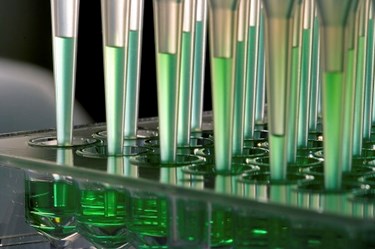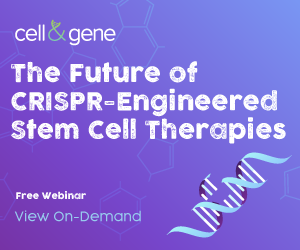Cell & Gene's 2020 Outlook: Stem Cell Research

I asked Cell & Gene’s Editorial Advisory Board members to provide their outlook for 2020 based on their role in the sector, and I will share each member’s insight with you in separate articles. Here, Bruce Bunnell, Ph.D., Director, Center for Stem Cell Research and Regenerative Medicine, Tulane University School of Medicine shares valuable data on three intense areas of stem cell research in 2020 and beyond. Read on as Bunnell explains what’s to come for extracellular vesicles, tissue-on-a-chip and microphysiological systems, and stem cell clinical trials.
1. Extracellular vesicles (microvesicles, exosomes)

2. Tissue-on-a-chip and Microphysiological systems
The development, testing, and application of microphysiological systems (MPS) or organs-on-a-chip (OC) will continue through 2020 and beyond. The goal for these systems is to use human cells and scaffolds to derive functional units of tissue and organs that recapitulate the native physiology. OCs typically represent a single tissue type or organ composed of one or more cell types. To date, organs-on-a-chip have been reported for tissues in the cardiac, musculoskeletal, nervous, respiratory, endocrine, gastrointestinal, reproductive systems, and cancer. An MPS is typically composed of an interconnected set of two or more OCs or three-dimensional cell constructs that can interact via secreted entities and are meant to replicate complex integrated human physiology. For example, a NIH-funded grant we are currently participating in is focused on the recapitulation of an osteoarthritic human knee. The MPS our team has developed is composed of bone, cartilage, synovium, adipose tissue and immune cell constructs that can interact in the context of a small bioreactor. The systems reported to date have been created using tissue-specific cells, tissue-derived adult stem cells, or combination thereof. More recently, there is a push for generating these MPS and OC from iPSCs, due to their inherent broader differentiation potential. The data generated thus far suggests iPSC-derived constructs may be comparable in their activity.
The primary rationale the development of a platform that uses human tissues is to apply them to evaluate the efficacy, safety, and toxicity of promising therapies. For example, these tissue chips would permit the screening of new drugs or compounds for their impact on human physiology and function prior to taking new drugs to human clinical trials. MPS may also be used to evaluate novel cell and gene therapies as well. It may also be possible to gain insights into disease-associated processes and investigate the role of specific gene pathways in the formation and manifestation of disease complications. Here again, biotechnology companies have entered this space and, in many ways, driving the development and commercialization of these systems.
3. Stem Cell clinical trials
One of the primary shifts in 2020 will be the expansion of human clinical trials using iPSC-derived cells and/or iPSC-derived products, such as scaffold seeded with iPSC-derived cell populations. The website clinicaltrials.gov indicates a total of approximately 95 clinical trials when searched for iPSCs. However, the bulk of the clinical trials are focused on the collection of human samples (often skin biopsies) to be used for the derivation and development of iPSC lines to study disease such as pulmonary diseases, neurologic diseases, cardiac diseases, retinal diseases, inherited genetic diseases, obesity, and an array of other diseases.
The first foray into the clinical application of iPSC-derived stem cells occurred in Japan when a female patient affected with age-related macular degeneration had a sheet of sheet of iPSC-derived retinal pigment epithelium cells implanted into her eye. While the patient did not have any detectable improvement in her vision, no obvious medical complications were noted.
Recently, formal clinical trials investigating the therapeutic potential of iPSC-derived products have been approved. One active trial underway at Nanjing University Medical School is using allogenic iPSC-derived cardiomyocytes from healthy donors to assess the assess the safety, feasibility and efficacy of intramyocardial delivery of iPSC-derived cardiomyocytes at the time of coronary artery bypass grafting in a total of 5 patients with chronic ischemic cardiomyopathy.
Another iPSC human trial has been approved in Japan. The goal for this Phase I trial is to assess the safety of implanting sheets of heart muscle cells generated from induced pluripotent stem cells derived from an allogenic donor as a potential treatment for heart failure. It does not appear that this trial has started yet, though it was approved in 2018.
We can expect that the number of trials and range of diseases under investigation for iPSC-derived cell products will increase rapidly over the coming years.

